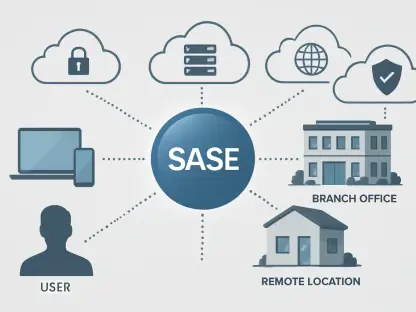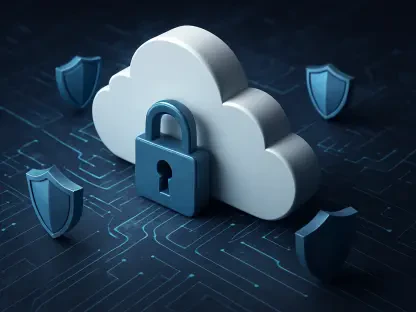A recent breach of the LockBit ransomware operation’s administration panel has unveiled a trove of hidden details pertaining to the group’s internal workings and exposed its vulnerabilities. This unexpected disclosure arose on May 7 when a domain associated with the group’s admin panel was defaced with a stark anti-crime message. Accompanying the defacement was a link to an extensive cache of leaked data. This cache included sensitive private communications between LockBit affiliates and victims, details of Bitcoin wallet addresses, affiliate account information, and data concerning the malware’s infrastructure. Notable cybersecurity experts, such as Christiaan Beek from Rapid7 and Luke Donovan from Searchlight Cyber, have emphasized the significance of the freshly unveiled Bitcoin addresses. For law enforcement, these addresses represent a potential goldmine. Additionally, affiliate data offers cybersecurity professionals crucial insights into the organizational structure and operational strategies of these cybercriminal entities.
Breaking Down the Breach
Intricate Details of Stolen Data
The magnitude of this breach is underscored by the nature of the data exposed. Among the revelations, Donovan particularly noted records of 76 user accounts, each inclusive of usernames and passwords. Within these records, 22 TOX IDs were uncovered. Interestingly, these TOX IDs are associated with hacking communities, allowing cybersecurity analysts to draw connections between these identifiers and specific aliases frequently encountered on hacking forums. This data not only illuminates the expansive network of hackers but also offers a glimpse into their operational tactics, including the various types of access they purchase for hacking ventures. By aggregating and analyzing this information, experts can better deduce the modus operandi behind these offenses, enhancing their readiness to counteract future threats. This breach, therefore, acts both as a warning and a learning opportunity for cybersecurity practitioners globally, revealing the complexities of cyber intrusions while highlighting strategies for more robust defenses.
Revealing Negotiation Tactics
The communications uncovered in the leak span from December 2024 through April 2025, providing an unprecedented look at the inner dealings of LockBit affiliates. Within these messages, a clear pattern of aggressive negotiation tactics emerges. Affiliates were seen demanding ransoms that ranged from a humble few thousand dollars to exorbitant amounts surpassing $100,000. These demands highlight not only the financial motivations driving these cybercriminals but also the often-desperate measures they employ to secure payouts. Furthermore, there is speculation that the entity behind this breach might be responsible for a previous similar attack against a rival cybercriminal group known as Everest. This suggests potential discord and rivalry among such groups. This infighting underscores a broader trend within the realm of cybercrime, where inter-group conflicts are becoming increasingly common, potentially weakening the structural integrity and collaborative efficiency of these groups.
Broader Implications for Cybersecurity
Impact on LockBit’s Operations
In the wake of this breach, LockBit has attempted to downplay the incident’s severity, asserting that no crucial decryptors or highly sensitive victim data were jeopardized. Despite these reassurances, the consequences of the breach are undeniably detrimental to LockBit’s operations and overall reputation. The attempts to minimize the impact reflect the underlying tensions and uncertainties within the cybercrime community. LockBitSupp, believed to be Dmitry Yuryevich Khoroshev, demonstrates the group’s concern by actively seeking information regarding the individual responsible for the breach. This hunt for the perpetrator underscores the fragility of trust and unity within such networks, highlighting the volatility and complex interpersonal dynamics often at play within cybercriminal circles.
Evolving Cybercrime Landscape
This breach serves as a significant marker in the ongoing evolution of global cybersecurity challenges. It highlights not only the persistent threats posed by groups like LockBit but also the increasing complexity and intricacy of cybercrime. The exposed rift among these groups further illustrates the pressures faced by cybercriminals from both internal and external forces. As authorities and cybersecurity experts focus their efforts on dismantling these rings, the spotlight on cybercrime grows more intense. Consequently, each breach reinforces the need for improved defenses, encouraging organizations to bolster their cybersecurity frameworks to withstand the escalating tactics employed by these nefarious actors. This evolving narrative paints a future of heightened alerts and robust countermeasures, aiming to curb the rise and influence of cybercrime on a global scale.
Taking Steps Forward
A recent security lapse involving the LockBit ransomware operation has exposed several secret aspects of the group’s inner workings and vulnerabilities. On May 7, a domain linked to their administration panel was compromised, displaying an anti-crime message. This defacement included a link to a vast collection of leaked data. This cache contained private communications between LockBit affiliates and their victims, Bitcoin wallet addresses, affiliate account details, and information about the malware’s infrastructure. Leading cybersecurity figures like Christiaan Beek from Rapid7 and Luke Donovan from Searchlight Cyber have underscored the importance of these newly revealed Bitcoin addresses. For law enforcement agencies, these addresses could prove invaluable in tracking illicit financial transactions. Moreover, affiliate account data delivers key insights into the organizational framework and strategies of these cybercrime operations, assisting cybersecurity experts in bolstering defenses against such threats.









